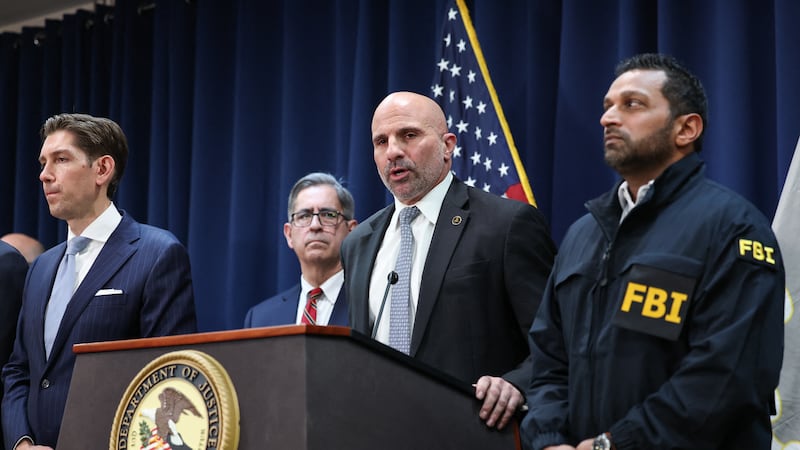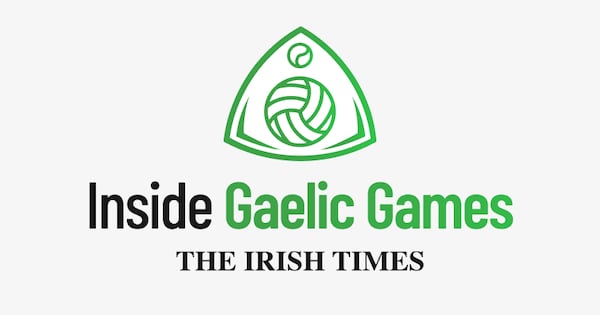With a timely flourish, the old controversy about young Irish players signing up for Australian rules clubs has landed. It does so in a week marking the anniversary of a crucial turning point in relations between the GAA and AFL.
On November 5th, 2006, Ireland and Australia met for the second test of that year’s international rules series at Croke Park. The match sold out for the only time in the 33 years of the international series. Fascination with the newly completed stadium was at its height, as was interest in the game itself.
A week previously, in Galway, the home side had staged a late surge to win by eight, so the outcome was in the balance.
Kevin Sheedy’s Australians, however, believed they had a grievance with Irish over-physicality and chose to disrupt Irish players before the second match even started.
READ MORE
There was some form in this, as two years previously a poor visiting team, having been beaten out the gate in the first test, decided to target the best of Ireland’s performers before the second match got under way.
Cork’s Seán Óg Ó hAilpín, former Kerry minor Tadhg Kennelly – by then a success in Aussie rules with Sydney – and Mayo’s Ciarán McDonald were all assaulted.
McDonald was highly visible with his flowing corn braids. In the pre-emptive attacks before the start of the game, Australian players shouted ”get Sheila".

Of course, the same McDonald is father of Kobe, the underage star who is now bound for St Kilda in a year’s time on completion of his Leaving Cert.
When the 2006 match got under way, Ireland were out of their depth in football terms but enthusiastically taking part in the ultra-violence. As an idea, international rules never recovered.
The GAA suspended it for a year and it would never again take place annually. It became a stop-start engagement, with nobody certain from year to year whether it was happening or not.
It fizzled out in 2017 and has now been in abeyance for longer than at any stage in its history, going back to 1984.
This has had a bearing on Australian recruitment of Irish players, which at one stage was more regulated, with inputs from both the GAA and AFL. These days, it is more of a free-for-all.
During the time of formal links between the organisations, while there was no way of halting the traffic of amateur players, there was, in the words of one official, “a definite understanding of the problems this recruitment was causing the GAA”.
Kerry chair Patrick O’Sullivan said at last year’s county convention: “Representatives of the AFL are constantly floating around Kerry minor and U20 teams over the last number of years. The association has to take some action regarding the AFL’s constant scrutiny of our younger stars in Ireland.”
The county has been particularly badly hit by departures to Australia, with Ben Murphy from Austin Stacks becoming the fourth current player to have signed. Kerry have, however, continued to win All-Irelands in their absence.
O’Sullivan believes clubs should be compensated for the loss of players. It’s hard to see the GAA authorising this commodification of players as compatible with amateur status, let alone general good practice. Such a move would ultimately incentivise the development of players for sale.
Although Mayo and Kerry have been disproportionately affected, the truth is the overall impact on football is slight. There are barely a dozen Irish players on the books of AFL clubs, as recruits come and go. Monaghan’s Karl Gallagher, for instance, returned this autumn after two years with the Adelaide Crows.
John Tobin, formerly chair of the GAA’s National Coaching and Games Committee and a key protagonist in the international series, argued this two years ago.
“Is it a drain on our games? No. It’s a career opportunity that has led to a trickle rather than a torrent out of our games, but it has also enhanced our games because the majority come back to play with us. The theory that we have lost more than we gained has been debunked.”

There is plenty of evidence to support Tobin. For every Jim Stynes or Zach Tuohy with lengthy AFL careers, there is an Anthony Tohill, whose spell in Australia gave him professional habits that helped drive Derry’s 1993 All-Ireland. Ciarán Kilkenny is a comparative case. He aborted a career with Hawthorn to return to Dublin in time for the Jim Gavin era 13 years ago.
“From a fitness and physical combat point of view,” he told The Irish Times in 2023, “I took a lot in terms of training from that. Every year I take up something new. Down there, they do a lot of wrestling and boxing, spinning and a lot of endurance-based running. Each year I try to evolve my body in a different way or take up a different sport, which will help me as a footballer.”
These mitigations are scant consolation to Kerry and Mayo, who have seen generational talents like Pearce Hanley and Mark O’Connor leave to pursue ambitions on the other side of the world – although the latter did return on holiday to assist Dingle in recently winning a first county title in 77 years.
Tadhg Kennelly also returned in 2009 on a year out from the Sydney Swans, avowedly to win an All-Ireland with Kerry in honour of his father, former county captain Tim.
As amateur players, Gaelic footballers are free to come and go as they see fit. That freedom of movement will inevitably take some of them to the AFL. There is very little that can be done about it except to wish them all the best and hope that sooner or later, they return.
email: sean.moran@irishtimes.com


















